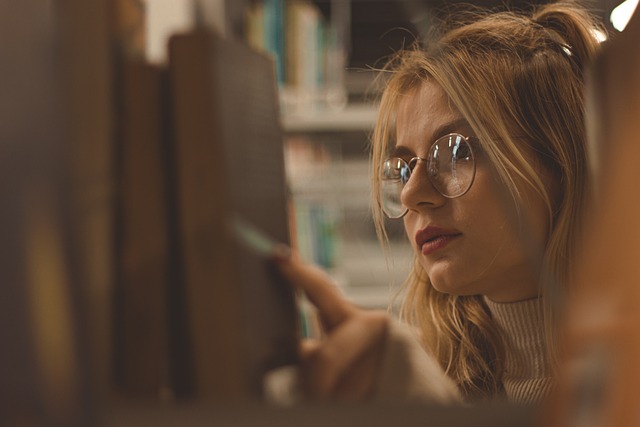Are you ready to embark on a writing adventure with your 3rd grade students? Brace yourselves for an exciting journey into the realm of informative writing prompts! We all know that crafting a compelling narrative can be a challenge, but fear not - our informative writing prompts are here to save the day. Get ready to unleash your students’ creativity, guide their imagination, and watch as they transform their ideas into fascinating stories. From animals in the wild to historical events, these prompts will spark their curiosity, encourage critical thinking, and inspire the next generation of talented storytellers. So, let’s dive into the fascinating world of informative writing prompts and watch the magic of narratives unfold!
Contents
- Choosing Engaging Topics for Informative Narratives
- Developing a Strong Introduction in Informative Writing
- Crafting Detailed and Well-Organized Body Paragraphs
- Using Descriptive Language to Enhance Informative Narratives
- Incorporating Facts and Research to Support Claims
- Revise and Edit for Clarity and Coherence in Informative Writing
- Providing a Thoughtful Conclusion to Informative Narratives
- Frequently Asked Questions
- In Summary
Choosing Engaging Topics for Informative Narratives
When it comes to crafting an informative narrative, selecting a topic that captivates your readers is crucial. Whether you’re aiming to entertain, educate, or persuade, an engaging topic will grab the attention of your audience from the start and keep them hooked until the very end. Here are some tips to help you choose the perfect subject for your informative narrative:
- Identify your target audience: Before you can select a topic, you need to understand who you’re writing for. Consider their interests, knowledge level, and what they hope to gain from reading your narrative.
- Tap into trending themes: Keep an eye on the latest news, social media trends, and popular discussions. Exploring current themes and issues will make your narrative feel timely and relevant.
- Utilize your personal experiences: Reflect on your own life and experiences. Stories from your own journey can not only provide valuable insights but also create a sense of connection with your readers.
Remember, the goal of an informative narrative is to provide valuable information in a compelling and engaging way. By carefully selecting a topic that resonates with your audience, you can guarantee their interest and ensure they walk away with newfound knowledge.
Developing a Strong Introduction in Informative Writing
In informative writing, the introduction plays a crucial role in capturing the reader’s attention and setting the foundation for the rest of the piece. It is essential to develop a strong introduction that not only provides key information but also engages the audience from the very beginning.
One effective way to hook your readers is by starting with a compelling statistic or fact that relates to the topic at hand. For example, did you know that over 80% of people suffer from public speaking anxiety? This shocking statistic immediately grabs the reader’s attention and makes them eager to learn more about the topic you are about to discuss.
Another strategy to create a strong introduction is by using a relatable anecdote or scenario. By presenting a real-life situation that readers can connect with, you provide them with a sense of familiarity and make your topic more approachable. For instance, imagine walking into a room full of strangers and being asked to deliver a speech on a complex subject – a scenario that most can relate to. This relatable scenario helps to establish a sense of empathy and draws the reader into the article.
Including a concise outline of the main points you will be discussing in the body of your writing is also beneficial. This preview gives your readers a clear understanding of the content and structure of your piece, allowing them to anticipate the valuable information they will gain from reading further. By structuring your introduction in this way, you provide a roadmap for your readers and make it easier for them to navigate through the rest of the piece. Remember, a strong introduction not only informs but also captivates, leaving readers eager to delve deeper into the informative content you will provide.
Crafting Detailed and Well-Organized Body Paragraphs
:
When it comes to writing, the body paragraphs serve as the backbone of your piece. They provide the main ideas, arguments, and evidence that support your thesis statement. To ensure that your body paragraphs are detailed and well-organized, here are a few essential tips to keep in mind:
1. Start with a topic sentence: Every body paragraph should begin with a clear and concise topic sentence that expresses the main idea of that particular paragraph. This sentence acts as a roadmap for your readers, guiding them through your thoughts and arguments. Make sure to keep your topic sentence focused and straightforward, allowing your readers to easily understand what the paragraph is all about.
2. Use evidence and examples: To strengthen your body paragraphs, it is crucial to support your main ideas with evidence and examples. This can include statistics, facts, quotes, anecdotes, or even expert opinions. Using credible evidence not only adds credibility to your writing but also helps to convince your readers of the validity of your arguments. Remember to explain and analyze your evidence, providing a clear connection to your main idea.
Using Descriptive Language to Enhance Informative Narratives
When it comes to crafting informative narratives, utilizing descriptive language can transform a mundane story into a captivating experience for readers. By incorporating vivid and engaging details, descriptive language adds depth and authenticity to your writing. Whether you are sharing a personal anecdote or reporting on a complex topic, mastering the art of descriptive language can make your narratives more memorable and impactful.
So how can you enhance your informative narratives with descriptive language? Here are a few tips to help you paint a vivid picture for your readers:
- Engage the senses: Use words that evoke sensory experiences, appealing to sight, sound, taste, touch, and smell. By describing the vibrant hues, the melodious chirping, the tantalizing flavor, or the soft texture, you transport your readers directly into the scene, making your narrative more immersive.
- Show, don’t tell: Instead of simply stating facts, bring your story to life by showing the readers what is happening. Paint a picture with words, allowing them to visualize and experience the events as if they were there. This approach creates a more engaging and relatable narrative.
- Use figurative language: Metaphors, similes, and personification can add a layer of depth to your descriptive language. Comparing an object or situation to something unexpected or using human qualities to describe inanimate things can spark imaginative connections in your readers’ minds.
By incorporating these techniques into your informative narratives, you can create a captivating reading experience that resonates with your audience. Descriptive language enables you to not only inform but also entertain, leaving a lasting impression and ensuring that your story remains etched in the minds of your readers long after they have finished reading.
Incorporating Facts and Research to Support Claims
When making claims in your writing, it is crucial to back them up with solid facts and reliable research. This not only lends credibility to your arguments but also helps to persuade your readers. Here are a few key ways you can effectively incorporate facts and research to support your claims:
- Find reputable sources: Begin by seeking out credible sources that provide accurate and reliable information. Look for scholarly articles, studies conducted by experts in the field, or reports from reputable organizations. This will ensure that you are basing your claims on solid evidence.
- Cite your sources: Always provide proper citations for the facts and research you include in your writing. This not only gives credit to the original authors and sources but also allows your readers to verify the information for themselves. Be consistent with your citation style, whether it’s APA, MLA, or another format.
- Use statistics and data: Incorporating relevant statistics and data can strengthen your claims and provide concrete evidence. Numbers and figures can have a powerful impact on your readers and make your arguments more persuasive. Make sure to present the data clearly and explain its significance in relation to your claims.
Remember, when incorporating facts and research into your writing, it’s important to maintain a balance. While it’s essential to support your claims with evidence, be careful not to overload your text with excessive information. Select the most relevant and compelling facts that directly relate to your arguments. By skillfully integrating facts and research into your writing, you can create a strong foundation for your claims and enhance the overall effectiveness of your work.
Revise and Edit for Clarity and Coherence in Informative Writing
One essential step in enhancing the quality of informative writing is to revise and edit for clarity and coherence. This process ensures that the information presented is easily understood and logically organized, allowing readers to grasp the intended message effortlessly. Here are some valuable strategies to consider when refining your informative piece:
1. **Simplify sentence structure:** Break down complex sentences into shorter, more concise ones. Aim for clarity by using straightforward language and avoiding unnecessary jargon or technical terms that might confuse readers.
2. **Create logical connections:** Ensure that your ideas flow smoothly from one paragraph to the next. Implement transitional words or phrases like “however,” “on the other hand,” or “in addition” to clarify connections between different concepts.
3. **Trim the excess:** Eliminate any redundant or unrelated information that might distract readers from the main point of your writing. Remember, informative writing thrives on delivering valuable content without overwhelming the reader with unnecessary details.
4. **Use headings and subheadings:** Organize your information into sections with clear headings and subheadings. This not only enhances readability but also allows readers to easily locate specific information within your piece.
By following these strategies, you can effectively revise and edit your informative writing for clarity and coherence. Remember that the ultimate goal is to present information in a way that is easily understandable, engaging, and informative to your audience.
Providing a Thoughtful Conclusion to Informative Narratives
As we reach the end of our informative narratives, it is essential to wrap up the content with a thoughtful and meaningful conclusion. This final segment allows us to leave a lasting impression on our readers, ensuring they walk away with a sense of satisfaction and a deeper understanding of the topic at hand.
One effective way to conclude our informative narratives is by summarizing the key points discussed throughout the content. By revisiting the main ideas, we emphasize their significance and reinforce the overall message we aim to deliver. This helps readers recall the essential aspects and ensures that our narrative remains coherent and well-structured.
- Revisit the main ideas: Remind your readers of the key points you have covered, reinforcing their importance and relevance.
- Provide a final insight: Offer a unique perspective or opinion that leaves an impact on your audience, encouraging them to reflect further on the topic.
- Leave room for further exploration: Suggest additional resources, invite readers to further research, or propose related topics they may find interesting.
- End on a positive note: Wrap up the narrative by inspiring your readers, leaving them with a hopeful or empowering thought.
By thoughtfully crafting our conclusion, we ensure that our informative narratives resonate deeply with our audience, leaving a lasting impression and encouraging them to engage further with our content. Let’s always remember that a well-rounded conclusion is the key to providing a satisfying end to our informative journeys.
Frequently Asked Questions
Q: What are informative writing prompts for 3rd grade?
A: Informative writing prompts for 3rd grade are specific topics or questions that encourage students to craft informative narratives. These prompts provide a starting point for young writers to explore and communicate their knowledge on various subjects.
Q: How can informative writing prompts benefit 3rd grade students?
A: Informative writing prompts help 3rd grade students develop their thinking skills, creativity, and ability to organize information. By working on informative narratives, students can improve their research skills, develop their writing voice, and gain a deeper understanding of different topics.
Q: How can teachers use informative writing prompts in the classroom?
A: Teachers can use informative writing prompts as a tool to engage and motivate students to express their thoughts and ideas. By incorporating these prompts into their lessons, teachers can encourage critical thinking, foster curiosity, and stimulate students’ interest in research and writing.
Q: What are some examples of informative writing prompts for 3rd graders?
A: Examples of informative writing prompts for 3rd graders may include:
– “Explain how plants grow and why they need sunlight.”
– “Describe the life cycle of a butterfly and its stages.”
– “Research and write about a famous historical figure who made an impact.”
– “Create an informative narrative about your favorite animal, detailing its characteristics and habitat.”
Q: How can students approach informative writing prompts effectively?
A: To approach informative writing prompts effectively, students can follow these steps:
1. Understand the prompt: Read and comprehend the prompt to be clear on the topic or question.
2. Research: Gather information from reliable sources such as books, websites, or interviews.
3. Organize thoughts: Create an outline to organize ideas and structure the narrative.
4. Begin writing: Start with an engaging introduction, provide factual details in the body paragraphs, and conclude with a summary.
5. Revise and edit: Review the writing for clarity, coherence, grammar, and punctuation.
6. Seek feedback: Share the narrative with peers or teachers to get constructive feedback for improvement.
Q: How can parents support their 3rd grade children in completing informative writing prompts?
A: Parents can support their 3rd grade children in completing informative writing prompts by:
1. Encouraging brainstorming: Help generate ideas by discussing the topic together.
2. Assisting with research: Assist in finding suitable resources and guide them in extracting relevant information.
3. Providing a writing schedule: Help set aside dedicated time for writing and maintain a consistent routine.
4. Acting as a sounding board: Listen to their ideas and offer suggestions for improvement during the writing process.
5. Celebrating achievements: Praise their efforts and celebrate completed writing pieces to boost confidence.
Q: How can informative writing prompts benefit students beyond 3rd grade?
A: Informative writing prompts can continue to benefit students beyond 3rd grade by enhancing their research skills, critical thinking abilities, and written communication skills. These prompts serve as a foundation for mastering informative writing techniques, which are crucial for academic success across various subjects and grade levels.
In Summary
In conclusion, informative writing prompts provide 3rd graders with the opportunity to develop their storytelling skills while also imparting valuable information. By crafting informative narratives, students not only enhance their writing abilities but also expand their knowledge on various subjects.







